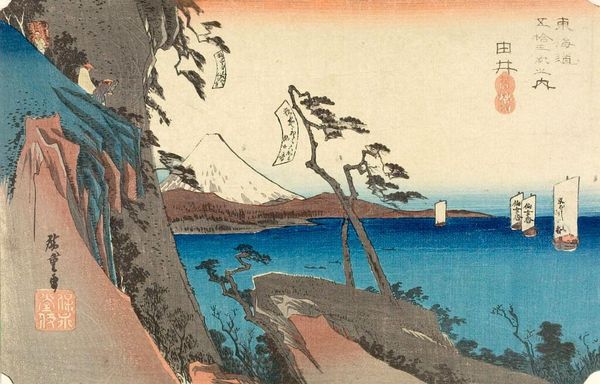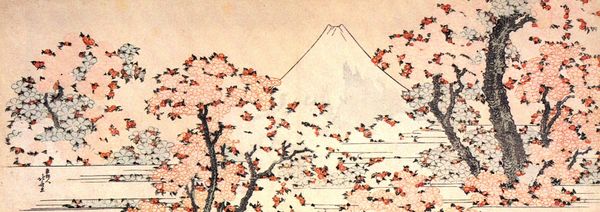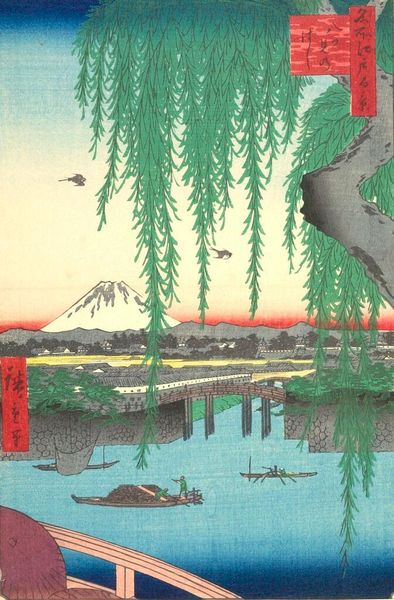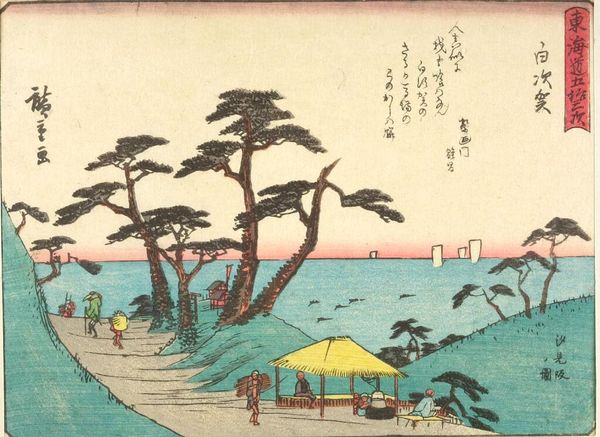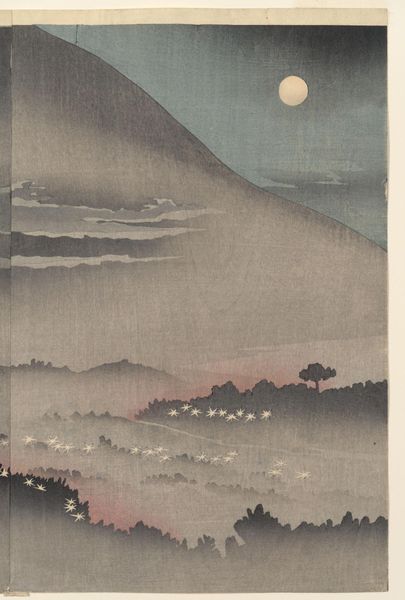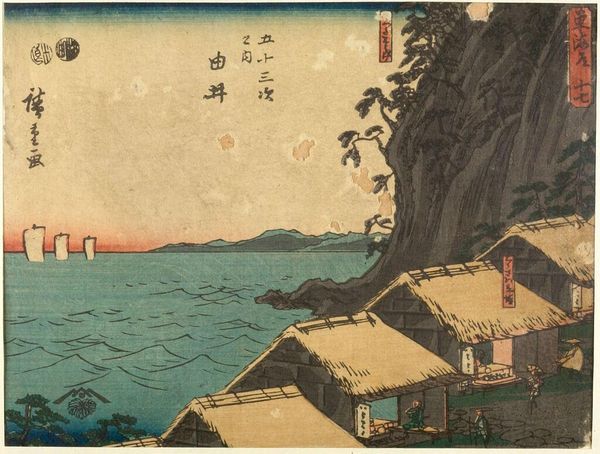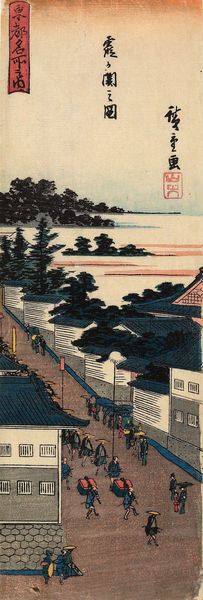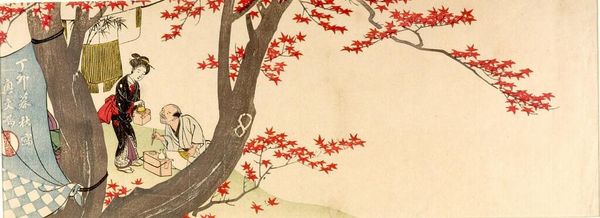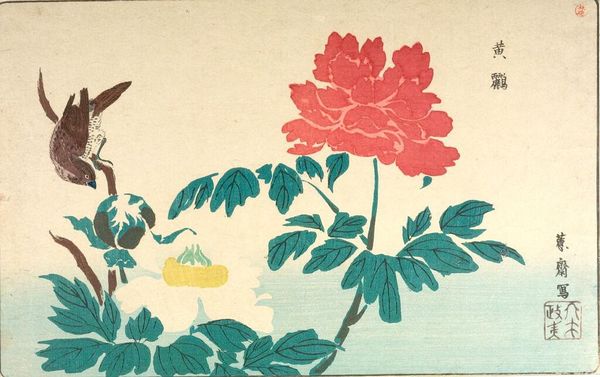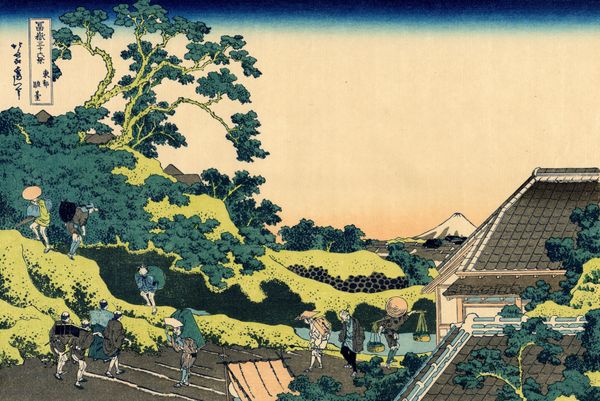
Cherry Blossoms at Goten-yama Possibly 1852 - 1853
0:00
0:00
mixed-media, print, paper, photography, ink, woodblock-print
#
mixed-media
# print
#
asian-art
#
landscape
#
ukiyo-e
#
paper
#
photography
#
ink
#
coloured pencil
#
woodblock-print
#
orientalism
#
genre-painting
#
mixed medium
#
mixed media
#
watercolor
Dimensions: 13 7/8 × 4 15/16 in. (35.2 × 12.6 cm) (image, chūtanzaku)
Copyright: Public Domain
Curator: Looking at this beautiful woodblock print, "Cherry Blossoms at Goten-yama," attributed to Utagawa Hiroshige and possibly dating from 1852-1853, I’m struck by how effectively it captures a sense of ephemeral joy. The perspective is quite fascinating. Editor: Indeed. It's as if we're peeking into a shared, social moment. I'm interested in how this print exists both as art and as a commodity of leisure culture in Edo-era Japan. The scene speaks of class, privilege, and gender dynamics related to leisure and landscape. Curator: The print utilizes mixed-media techniques: we see photography, ink, colored pencil and, notably, the application of woodblock printing onto paper. The visible grain of the woodblock adds texture. Hiroshige also understood the economics of ukiyo-e prints, producing for a wide audience keen to possess scenes of famous locations. Editor: I see this piece operating within a much broader discourse of orientalism and representations of the ‘exotic East,’ but looking more closely, it seems that cherry blossom festivals were very important to communities in Japan, bringing different groups together. Also, considering it was the work of craftspeople from layout artist to woodblock cutter to printer, it prompts a vital query: Who exactly owns the labor within the making of such objects? Curator: Certainly, it makes you think about the collaborative processes. Consider, too, the specialized skills that the artisans brought to these productions, transferring the original artist’s concept onto the blocks. Editor: Which also prompts a series of ethical questions around image creation, and particularly, the relationship to female portraiture in Edo society. These representations are clearly mediated. Whose gaze are we really seeing? Curator: Ultimately, this print invites reflection on our own historical moment, in which photographic images shape our memories. "Cherry Blossoms at Goten-yama" reminds us of art's capacity to freeze transient, yet profoundly shared human experiences. Editor: Right. In interrogating its making, medium, context and representation, we've uncovered narratives which enrich, but also question, both its aesthetic impact and legacy. I hope our listeners found these brief thoughts valuable.
Comments
No comments
Be the first to comment and join the conversation on the ultimate creative platform.

